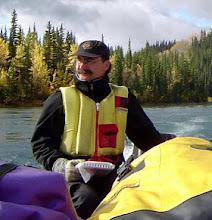A Hike to Newton's Falls, Akaroa, New Zealand
Akaroa, at the end of the road on the Banks Peninsula on the east coast of the South Island of New Zealand, is one of a dozen small rural communities scattered on the slopes of a set of ancient volcanoes. The outside of the peninsula has a series of lovely sand beaches in deeply incised coves. Akaroa is in the caldera of one of the volcanoes. Every direction is a steep climb up. The hike to Newton's Falls conveniently starts right at our front door.
The Banks Peninsula has a number of environmental and cultural bodies dedicated to the preservation of landscape, flora and fauna and the maintenance of walking paths. Often these are through land purchase, but there are also several land owners who have accepted or chosen to place conservation covenants on their lands. The result is a community with a strong place consciousness. One example is the Hinewai Reserve - membership includes the hand written newsletter with colourful original artworks by the resident biologist. Another family has established a penguin reserve on their farm.
http://yukonrambles.blogspot.co.nz/2010/03/banks-peninsula-walk-new-zealand.html
Along the track there are a number of rustic accommodations, some perhaps beyond my comfort zone. However all are gloriously festooned with flowers and trees and well settled into the landscape.
Plenty of people, though with the winding we see them only briefly as we pass. About half way up the track narrows and becomes a trail through the native bush - another of the protected elements of the place.
An old wool shed speaks to the continuing presence of sheep in the district. Howard, our farmer friend says "We look after the sheep the year round and get 2/3 of the sale, the shearer spends two minutes with each sheep and gets 1/3."
Cool and shadowy at the falls, we take time to relax and enjoy the gentle sounds of the water and watch it twist its way down the creek we've followed uphill.
The silvery stream of water drops some ten or more metres, the origin lost in the mosses and foliage above us. Eventually we straighten our stiffening knees and b egin the trek back home.




.JPG)
.jpg)













.jpg)
.jpg)
.jpg)
.jpg)
.jpg)
.jpg)
.jpg)
.jpg)

.jpg)
.jpg)
.jpg)
.jpg)
.jpg)
.jpg)
.jpg)
.jpg)
.jpg)
.jpg)
.jpg)
.jpg)
.jpg)
.jpg)
.jpg)
.jpg)
.jpg)
.jpg)
.jpg)
.jpg)
.jpg)
.jpg)
.jpg)
.jpg)
.jpg)
.jpg)

.jpg)
.jpg)
.jpg)
.jpg)
.jpg)
.jpg)
.jpg)
.jpg)
.jpg)